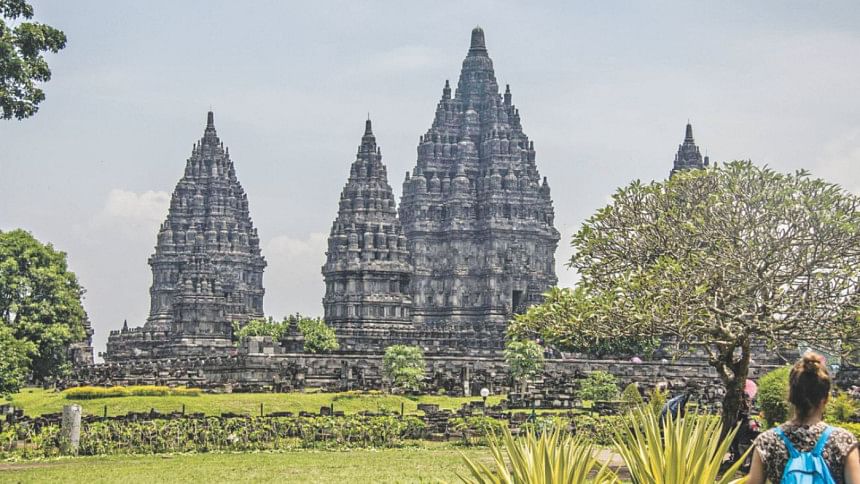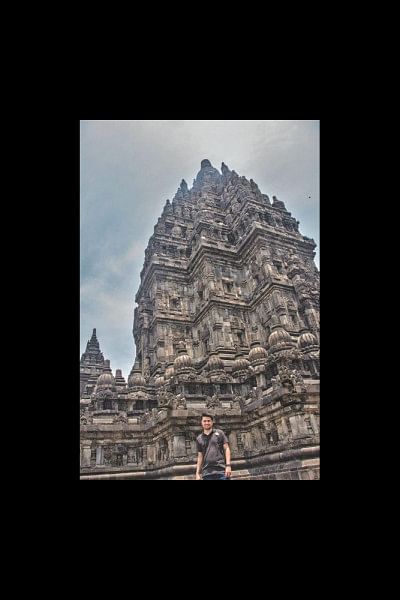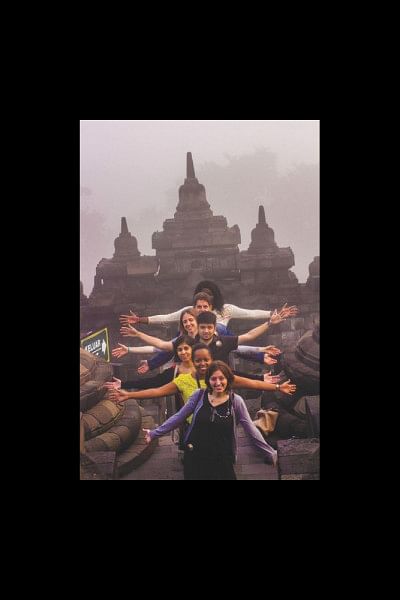YOGYAKARTA

YOGYAKARTA, more popularly known as Jogja by the locals, is a bustling town of some half a million people and the most popular tourist destination in Java. It is only one of five districts within the semi-autonomous region of Daerah Istimewa Yogyakarta (DIY), literally the "Yogyakarta Special Region".
This special status is thanks to the Sultanate of Hamengkubuwono, which has ruled the area since 1755 and steered the state through difficult times of occupation and revolution.


During the Indonesian war of independence, Sultan Hamengkubuwono IX offered the fledgling Indonesian government his enclave as capital city, thus Yogyakarta became the revolutionary capital city of the republic from 1946 to 1949, when Jakarta was still occupied by the Dutch.
Jogja lies in one of the most seismically active parts of Java and has thus repeatedly been struck by earthquakes and volcanic eruptions.
Getting there
You can reach Jogja by flight and train. It takes about an hour and ten minutes by flight and about 8-9 hours by train. It's about 35 USD by train in economy class while between 60-150 USD by flight. Air Asia usually has deals that start at 58 USD and Garuda is between 130 USD and 150 USD. If you are flying, it is advisable to fly either Air Asia or Garuda Indonesia.

Places to stay
Jogja is a hotel heaven! Big hotels, large properties, luxury -in every aspect, great food and moderately priced stays make it a destination for 'hotel tourism.' You can get Hyatt Regency Yogyakarta at 100 USD in season. Hyatt has two great restaurants, a pool probably as long as the river Nile, golf course, separate building for spa, chilling spots under tree and close to waterbodies and gentle native instrumental pieces being played everywhere.
Eastparc is about half the price and almost half the luxury, however, it's extremely well rated on TripAdvisor. Favehotel is about 25 USD and is comparatively a good value for money.
Food talk
Javanese cuisine is the local culture. Its spicy, sweet, sour and a lot of flavours – no half measures for which I loved it.
Bogey's Teras
Try the Oxtail Soup with rice. It comes in a large bowl of slow-cooked, oxtail soup with native spices and lots of garlic. As its slow cooked, you can bite the bones and eat them. It is close to a 'deshi' styled 'paya' minus the spices. The bowl is large and one order is enough for two. I enjoyed it but found it a bit oily.

Kemangi Bistro
I had the spicy snapper in Javanese sauce. It was one of the best meals in Indonesia for sure. The steamed rice was wrapped in spinach and shaped like a ball, the snapper fillets were towered and served over magical Javanese sauce. Things to do
Borobudur Temple and Stupa: A thousand years ago, Yogyakarta was the center of ancient Mataram Kingdom which was prosperous and highly enlightened. This kingdom built Borobudur Temple which was the biggest Buddhist temple in the world. Borobudur Temple has stood gallantly in the land of Java. The building called by UNESCO as the most magnificent and the largest monument and stupa complex in the world has been visited by pilgrims for decades.
Not only magnificent and large, Borobudur Temple wall panels are filled with 2672 sculptured reliefs which if arranged in row, will reach a length of 6 km!
It is praised as the largest and the most complete Buddha reliefs ensemble in the world, unmatched in artistic value. If you are looking for peace, sunrise in Borobudur is just that. It's advisable to get a tour guide.
It is a Buddhist site for pilgrimage but managed by the local Muslim population. Prambanan Temple
Prambanan temple has three main temples in the primary yard, namely Vishnu, Brahma, and Shiva temples. These three temples are symbols of Trimurti in Hindu belief. All of them face east. Each main temple has an accompanying temple facing west, namely Nandini for Shiva, Angsa for Brahma and Garuda for Vishnu. Besides, there are 2 flank temples, 4 kelir temples and 4 corner temples. In the second area, there are 224 temples.
The artwork inside the temples and on the stones are much more intricate than those at the Borobudur, however, charms are different in each of them.
It is best to visit the temple either early morning or after mid-day.
Boko Palace
King Boko Palace was a glorious building that was constructed during the reign of Rakai Panangkaran, descendant of Sailendra dynasty. The palace that was initially named Abhayagiri Vihara (that means a monastery on a peaceful hill) was built for seclusion purpose and to focus on spiritual life. From this palace, you will feel peace and will be able to see Yogyakarta city and Prambanan temple with Merapi Mountain as the background.
Merapi
Mount Merapi is situated within a straight line, which also connects the Palace of Yogyakarta and the Indian Ocean. It holds an important role in Javanese society. The three places are believed to be a cosmologic trinity; all of them are closely connected to each other.
It's about two hour walk to see the tip of Merapi. The best way to travel is on foot if you feel fit enough for it.
Malioboro
It's a noisy, loud, artsy and full of touristy stuff and is a must visit for people who like masks.
Tips:
We contacted a local travel agency run by Ms Mita (+62 813-2749-9852) who did give us a wonderful tour around Yogyakarta, which started at 2am and ended after a visit to Prambanan and Merapi at 4pm.
Photo courtesy: Taskin Rahman

 For all latest news, follow The Daily Star's Google News channel.
For all latest news, follow The Daily Star's Google News channel. 



Comments